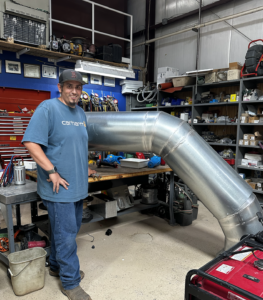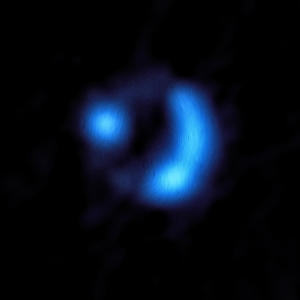Zach Gallegos: The Man Behind HVAC at the Very Large Array
Zach Gallegos, a native of Socorro, New Mexico, is the HVAC and Plumbing lead at the Very Large Array (VLA). He is a dedicated professional who has carved a niche for himself in the field of HVAC and plumbing.
Zach’s journey into the HVAC field was not a planned one. After graduating from Doña Ana Community College, he was searching for a job when HVAC came across his path. His love for tinkering with things since childhood made him a natural fit for the job. He started his career at the National Radio Astronomy Observatory (NRAO) as a security guard, where his dedication and hard work saw him quickly rise through the ranks, first as a track operator, then as the HVAC team lead.


A typical day for Zach involves a variety of tasks, from instrument readings to checking emails and ensuring the functionality of antennas. His role is crucial to the VLA, as he is responsible for all HVAC, plumbing, and compressors, essentially anything that has a motor. HVAC also controls the chiller for the supercomputer, a critical component of the VLA. HVAC takes care of 28 vertex air conditioners and 28 ped room air conditioners. These are highly modified, and thus are made and designed in house. Zach takes care of air conditioning for all the buildings at the VLA site. HVAC also takes care of all the plumbing, from fixing a faucet to repairing both sewer and fresh water lines. They also manage the water treatment system and all sewage. Additionally, HVAC is responsible for the air compressors in each building – there are seven total. They maintain and monitor the fuel system on site, as well as the gas station. They manage all the ventilation systems, and they repair and maintain all the air conditioners on the over 100 vehicles at the VLA. Zach’s responsibilities extend beyond the VLA site. He also manages and maintains all of the Pie Town Very Long Baseline Array (VLBA) site’s air conditioners and hot water heaters.
Despite the demanding nature of his job, Zach loves his work, especially the people he works with and the opportunity to work four days a week, enjoying a three-day weekend. However, like any job, Zach’s role comes with its challenges. He has been the only person in HVAC for the past two years, making it difficult to manage all the responsibilities single-handedly. He wishes to recruit and train more skilled tradespeople in the field to ease the workload and ensure the smooth functioning of the VLA.
Zach Gallegos is a shining example of dedication and hard work. His journey from a security guard to the HVAC and Plumbing lead at the VLA is inspiring. Despite the challenges, he continues to serve with grit and determination, ensuring the smooth operation of the VLA. His story serves as a reminder that with passion and dedication, one can achieve great heights in any field.
About the People Behind the Very Large Array:
Highly-skilled individuals work behind the scenes day in and day out to make our magnificent Array the very best it can be. The People Behind the VLA project aims to highlight the stories of these workers and share their stories, so that everyone may get a glimpse of the wonderful people that make the Very Large Array work.
The post The People Behind the Very Large Array appeared first on National Radio Astronomy Observatory.













